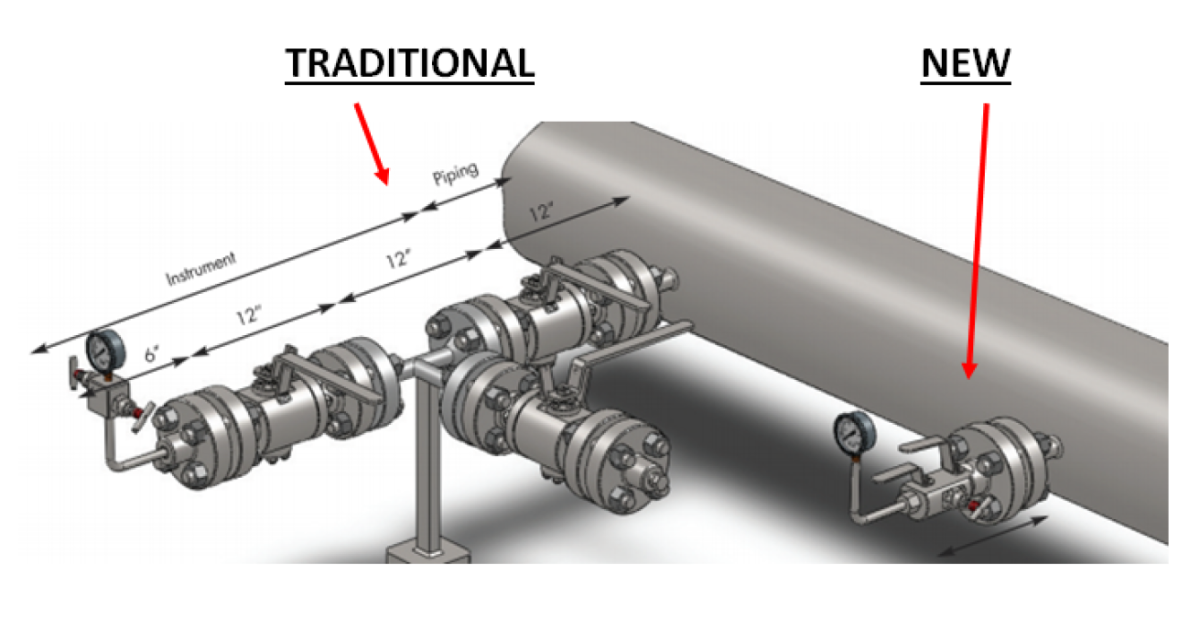5 Benefits of Using the New Method to Achieve Double Block & Bleed
True Double Block & Bleed can be accomplished in different ways; while specific sets of operating criteria and unique piping arrangements may point to one method over another.
Here is a list of benefits you can expect to achieve while using a single-body, forged valve (with 2 separate isolates & 1 vent), versus the “traditional” Double Block & Bleed method, using multiple valves and piping.
1. Reduced Leak Paths
In looking at the “traditional” portion of the drawing above — which is no doubt a depiction of worst case scenario — there are multiple connections between valves, fittings & piping. The single valve shown to the right (“new”) is accomplishing all those same Double Block and Bleed (DBB) characteristics with far fewer connections / leak paths.
2. Reduced Space & Weight
In many cases, these may not be a factor, but there are some applications where this is more important than others. Owners and operators of Offshore Platforms continue to rely on the single-body DBB design, where it is both highly approved and widely specified. Also, custom-build skidded equipment manufacturers are often tasked with turning broadly-defined specifications into a product solution that can be delivered in a very tightly-defined footprint. Actual weight & space savings vary greatly, depending on the size and pressure class of valves.
3. Reduced Labor
Pipefitters and welders are most valuable to the organization when their direct labor is allocated to the highest-value activities. Is some arrangements, labor spent on cutting and welding support brackets can take this skilled team off course.
4. Cost Reduction
Here, specific savings will not only vary greatly based on size and pressure class, but materials of construction will play a significant role in this area. As customer requirements move into Duplex, Super Duplex and High-Nickel Alloys, tremendous savings can be realized when a single valve can take the place of 3 valves and the associated piping and fittings.
Among the many lessons learned was a need to reduce leak paths within the piping systems. Within months of the findings, Occidental Petroleum worked in concert with valve manufacturers in the UK to develop this new, better way. There is also another version called Safety B, which features fewer hours spent on cutting, grinding and welding activities can further reduce risk of injuries in the workplace.
5. Safety A
This type of valve was initially born out of a tragic accident that occurred in the North Sea in 1988 on a platform known as Piper Alpha. A horrible explosion occurred and as the fire continued to burn, bolting & gaskets began to fail under extreme heat. The resulting breaches quite literally fueled the fire killing 167 workers and resulted in a total loss of the platform.
Among the many lessons learned was a need to reduce leak paths within the piping systems. Within months of the findings, Occidental Petroleum worked in concert with valve manufacturers in the UK to develop this new, better way. There is also another version called Safety B, which features fewer hours spent on cutting, grinding and welding activities can further reduce risk of injuries in the workplace.
If you have any questions, feel free to send us an inquiry online or call us at 1-800-234-3033 and we will make sure to get back to you as soon as possible.

